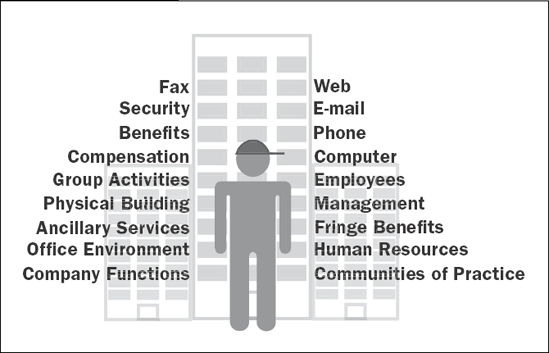3.4. Touch Points
Managing the corporate–knowledge worker relationship involves managing the quality and content of communications between knowledge workers and the corporation. From the knowledge worker's perspective, the corporation exists as an array of touch points (see Exhibit 3.2). These points represent opportunities to exchange value—information —whether the knowledge worker is manipulating or creating information, or receiving feedback from management. Knowledge workers interact directly with the corporation at the office through personal contact, via surface mail for some issues, and by e-mail, the web, fax, telephone, cell phones, and wireless devices for others.
Of particular note is that ERM is a dynamic process in a knowledge organization, where what is an acceptable contribution one month may be unacceptable the next. Because of the cost of terminating a knowledge worker (unless economics dictates it), managing the relationship is focused on shaping his or her behavior. Doing this involves communicating requirements, providing the education and technology tools knowledge workers need to do their job, and facilitating collaboration and leveraging of knowledge internally, within the organization.
EXHIBIT 3.2. EXHIBIT 3.2

The key point is that the message from the corporation to knowledge workers must be consistent across all touch points, especially since every touch ...
Get Essentials of Knowledge Management now with the O’Reilly learning platform.
O’Reilly members experience books, live events, courses curated by job role, and more from O’Reilly and nearly 200 top publishers.

